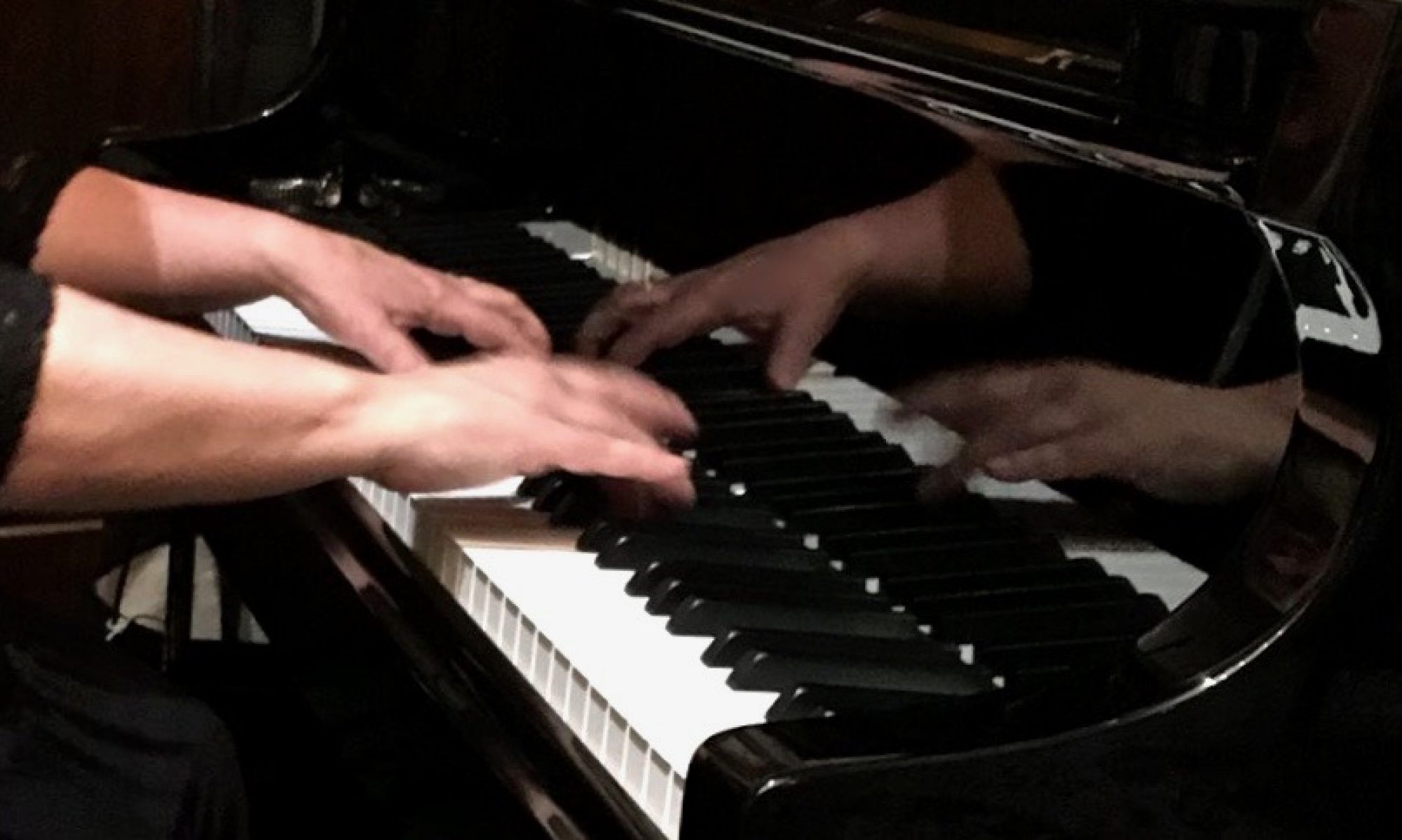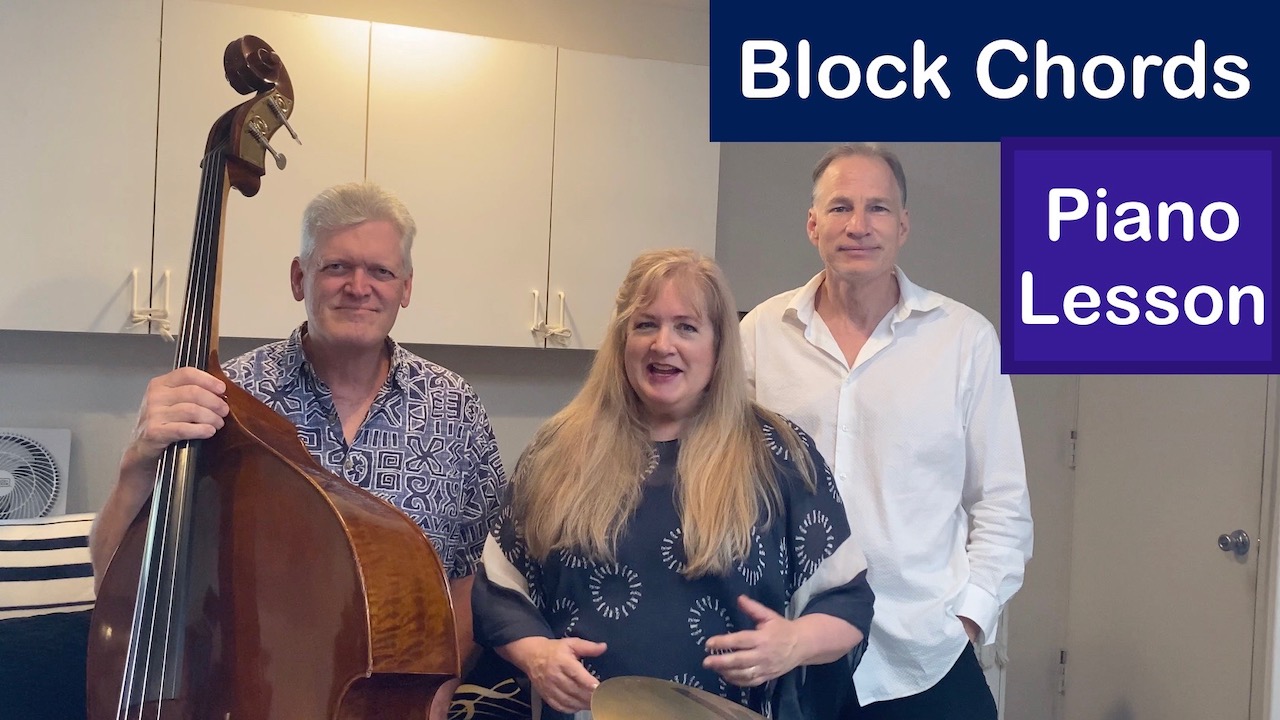There are certain types of rich chord techniques the jazz pianist ought to have under their fingers in a piano/bass/drums or larger group setting. Both Block and Spread Chords may be used for a full sounding effect during the melody of certain tunes. Additionally, these styles may be used to build intensity during a piano solo, or culminating in impressive spread chords at the solo’s highpoint.
The Block Chord Style on the keyboard was originally invented by pianist/organist Milt Buckner, who imitated the shout chorus horn arrangements of bands like Glen Miller’s, then translated similar voicings to the piano. The pianist however, who received most recognition for this signature sound was George Shearing, when his quintet in 1949 rose to fame with the Harry Warren hit, September In The Rain. The George Shearing Quintet used the instrumentation piano/vibes/guitar/bass/drums, with the first three instruments each playing a highly nuanced melody in perfect syncronization. Check out the September In The Rain link below:
Officially Block Chords, also known as “Locked Hands Style“, consists of the RH playing the melody on top while grabbing several notes underneath, while at the same time the LH doubles the melody a mere octave below. This technique keeps all the notes closely voiced within an octave, and the hands appear to be moving as though locked together. Usually block chords are played around the center register of the piano. This video below explains it:
Pianist Red Garland played what most musicians consider to be Spread Chords (with apologies to correcting Miles Davis when he asked the pianist, “Play some block chords, Red”). Spread chords have the hands visually spread further apart, just like you’d think! The RH plays the melody or improvised solo line in the mid to upper register using octaves, while perhaps including a complimentary note in between that RH octave. The LH plays rich and complex 4 note chords in the sweet spot around center register of the piano. Both hands play simultaneously, with every top melodic note backed by all 7 or so notes, punched together. Check out Red Garland’s trio playing Billy Boy in the link below:
Pianists mainly use block or spread chords in a combo setting – or at least with a bassist who plays the roots to the chords in order to give the music a bottom end. However, there are exceptions! Check out Oscar Peterson playing, Give Me The Simple Life, covering the keyboard using block chords just by himself on his solo piano album Tracks in the link below:
UPDATE: The above lesson emphasized block chords in a MAJOR key – here is a lesson on how to use block chords in a Minor Key, beginning with the tune Lullaby Of The Leaves:
Followed by the tutorial Block Chords Lesson Part 2: Key of Cmi
There is an even more advanced 2 handed piano chord technique called “Drop Two Voicings”, which we will leave for another day. Meanwhile, this is plenty to handle for now! Read more about harmonizing under a melody, chord techniques, and other ideas in my book/audio, Amazing Phrasing – Keyboard.

